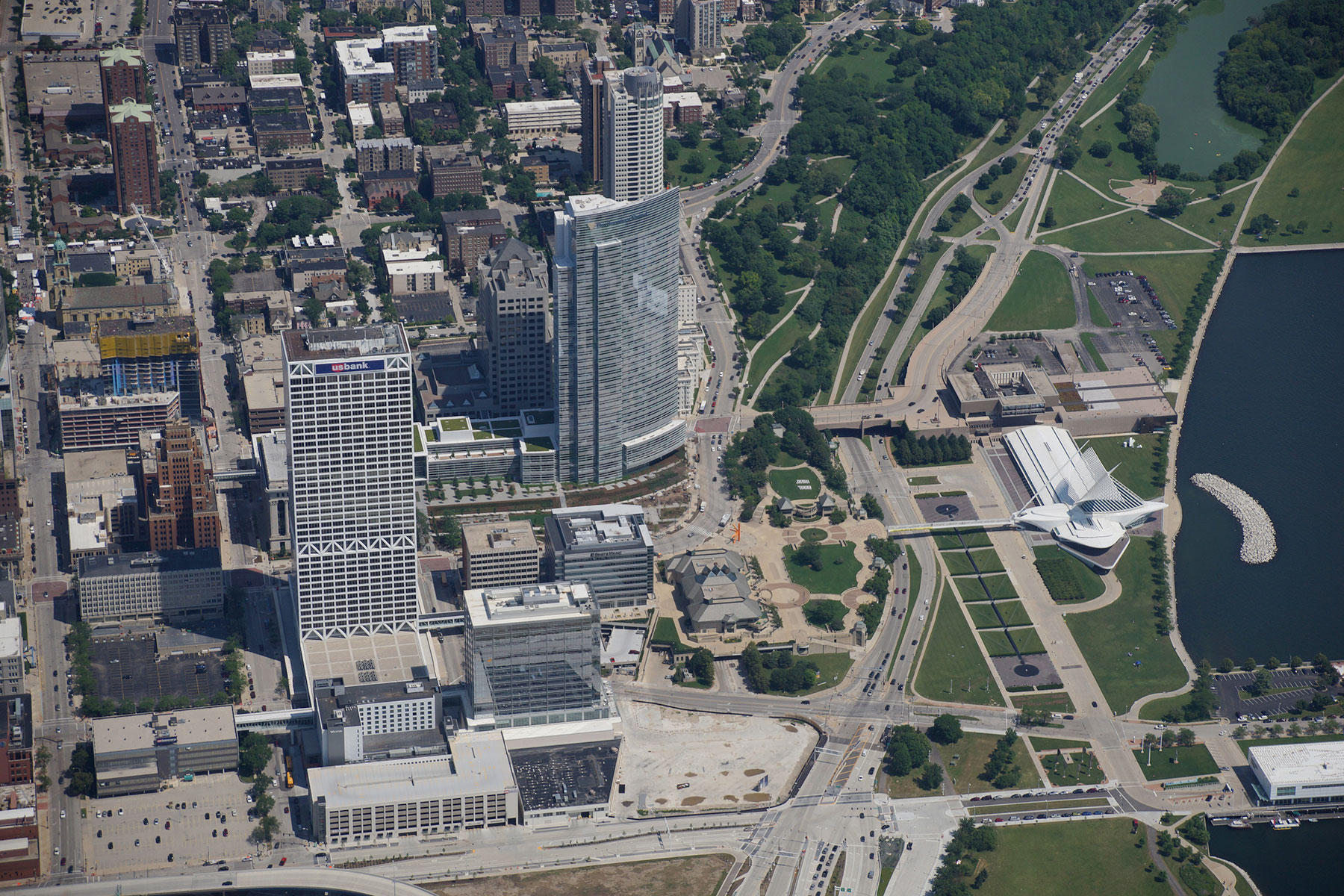
A report released August 1 by the Milwaukee-based Public Policy Forum found that “business and neighborhood improvement districts (BIDs and NIDs) have become more abundant in Milwaukee than in any other American city,” but warned that a lack of performance data makes it difficult to assess their effectiveness.
“With its 32 BIDs and 7 NIDs, the City of Milwaukee has more per capita than any other city in the U.S.,” says Christopher Hillard, the Forum’s 2016-17 Norman N. Gill Fellow and the report’s lead author. “In fact, Milwaukee has more than double the number of BIDs and NIDs per capita as Minneapolis, which occupies the number two slot, and more than five times as many as New York, which often is seen as the epicenter of the BID movement.”
In terms of absolute numbers of BIDs, Milwaukee was tied for third with Los Angeles, which is the nation’s second largest city by population. The two cities with more BIDs, New York (72) and Chicago (53), are the nation’s largest and third largest.
In Wisconsin, there are two types of districts designed to support economic development, business improvement districts (BIDs), which focus on commercial properties; and neighborhood improvement districts (NIDs), which are very similar except that they may also include some residential properties.
BIDs and NIDs are managed by boards chosen from the property owners within the district, that are responsible for drafting the operating plans for districts and determining the formula that will be used to assess their properties. The local municipality approves these plans and also is responsible for collecting and distributing the annual assessments of the districts.
In addition to examining the preponderance of BIDs and NIDs in Milwaukee County, the report explores their role and their relevance to economic development. It begins by reviewing the history of BIDs in the United States, including the philosophy behind their development and some of the critiques that have been leveled against them. It then dives into the history, management, finances, and legal status of BIDs in Wisconsin and Milwaukee County, including analysis of issues and challenges and recommendations to address them.
“Despite their widespread usage in Milwaukee County and the involvement of municipal governments in their creation and oversight, BIDs remain a largely under-studied economic development tool,” says Hillard. “This report attempts to change that circumstance by shedding light on the activities and performance of the county’s BIDs.”
One of the report’s key findings is that ability to assess the effectiveness of BIDs and NIDs in Milwaukee County is severely restricted by lack of available performance data. For example, while all BIDs and NIDs are required to submit an annual operating plan for municipal approval, most lack clearly articulated goals and metrics. The report also finds that the annual audits for many BIDs and NIDs fail to distinguish between program expenses, general/administrative expenses, and fundraising expenses, meaning BID/NID members have no way of knowing whether the district’s management or fundraising expenses are in line with other districts or their own expectations.
Other key findings from the Forum’s analysis of Milwaukee County’s BIDs and NIDs:
- In addition to possessing an unusually high number of BIDs per capita, the City of Milwaukee has a number of BIDs and NIDs that overlap with, or exist entirely within, other BIDs or NIDs. For example, Milwaukee’s Downtown BID overlaps with at least five other BIDs, which often overlap themselves. This overlapping of BIDs and NIDs does not appear to be evident in any other city in the U.S.
- The City of Milwaukee houses 39 of the 45 BIDs and NIDs in Milwaukee County. The properties contained within the city’s BIDs and NIDs have an assessed value of $5.7 billion, which accounts for 21% of the city’s total real estate value. The BIDs alone, which almost exclusively are made up of commercial properties, have a combined property value of $4.7 billion – more than half of the city’s total commercial value.
- Wisconsin’s BID and NID statutes are notable for the relatively low thresholds they set for district creation. In addition, creation and retention of BIDs in Wisconsin is largely determined by the support of property owners based on the percentage value of the property they own within a district, as opposed to majorities of the number of property owners.
- With its 32 BIDs and 7 NIDs, the City of Milwaukee has more per capita than any other city in the U.S. In fact, Milwaukee has more than double the number of BIDs/NIDs per capita as Minneapolis, which occupies the number two slot.
- The properties contained within the City of Milwaukee’s 39 BIDs and NIDs have an assessed value of $5.7 billion, which accounts for 21% of the city’s total real estate value. The BIDs alone, which almost exclusively are made up of commercial properties, have a combined property value of $4.7 billion – more than half of the city’s total commercial value.
- BIDs and NIDs can be created by property owners to co-invest in mutually beneficial services or improvements. In addition to possessing an unusually high number of BIDs per capita, the City of Milwaukee has a number of BIDs and NIDs that overlap with, or exist entirely within, other BIDs or NIDs. For example, Milwaukee’s Downtown BID overlaps with at least five other BIDs, which often overlap themselves. Milwaukee appears to be unique in this overlapping of BIDs and NIDs.
- Wisconsin’s BID and NID statutes are notable for the relatively low thresholds they set for district creation. In addition, creation and retention of BIDs in Wisconsin is largely determined by the support of property owners based on the percentage value of the property they own within a district, as opposed to majorities of the number of property owners.
The report concludes with a series of observations and recommendations, including several that aim to build off recent progress made by Milwaukee’s Department of City Development to enhance the ability of BID and NID members, as well as the community at large, to assess their effectiveness.
“The unique assortment and volume of BIDs and NIDs in Milwaukee County and, particularly, the City of Milwaukee, signals that they are perceived as a valuable economic development tool by their members,” says Hillard. “An important next step is to improve data collection and reporting so that we can quantify that value and determine whether BID and NID creation and retention should be further encouraged and supported.”
Milwaukee-based Public Policy Forum, established in 1913 as a local government watchdog, is a nonpartisan, nonprofit organization dedicated to enhancing the effectiveness of government and the development of southeastern Wisconsin through objective research of public policy issues.
The report was produced under the Forum’s Norman N. Gill Fellowship, an initiative funded by the family of Norman N. Gill, the organization’s director from 1945 to 1984.














